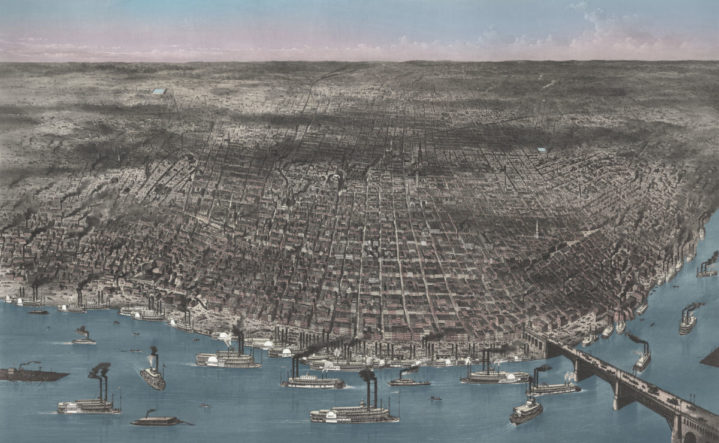
Why Do We Let Political Fragmentation Hold Back Our Entrepreneurs?

Writing by Kyle Juvers. Kyle Juvers serves as the Associate Director of Community-Based Studies at Better Together. In this capacity, Kyle works with consultants, partner agencies, and community stakeholders to assemble valuable information on municipal services throughout St. Louis City and St. Louis County.
St. Louis is home to world class universities, top-tier sports franchises, a powerhouse philanthropic community and an entrepreneurial ecosystem that rivals any in the country.
It all begs the question — why does a region with world-class resources struggle to thrive and compete in a global economy?
Despite all our advantages and a growing innovation ecosystem, St. Louis City and County have still lost population in recent years, and our unemployment rate, though improving, lags behind other regions.
More than that, our cities struggle to fulfill the basic functions of a city: St. Louisans spend $750 million more than our peers in Indianapolis and Louisville to deliver the same set of municipal services.
One Region – With 114 Governments
At Better Together, we’ve found that the answer lies in St. Louis’ obsolete, fragmented political structure.
Between St. Louis City and County, there are 114 governments that deliver municipal-level services — things like police, firefighters, road maintenance and housing inspections.
Better Together’s most recent report shows that these 114 governments spend $2.5 billion annually. That’s an increase of $119 million since 2013 — and during a period in which our region’s population actually shrunk by 8,625 residents.
The numbers tell the story: citizens in St. Louis City and County are spending more money to deliver the same services to fewer people.
Costs Beyond Dollars and Cents
Our fragmented political landscape isn’t just expensive. It’s burdensome and inefficient.
The governments that comprise St. Louis City and County have over 52,000 pages of ordinances among them.
Processes like business licensing and safety inspection differ from city to city and are often difficult to navigate. While many municipalities implement online access to forms and documents, many do not.
The lack of standardized processes, procedures, and costs create confusion and frustration — especially because many small business owners and entrepreneurs frequently receive information on starting a business from existing business owners.
To Have a Shared Vision, We Must Have a Shared Region
Perhaps the greatest consequence of fragmentation is our inability to form a strong, shared vision for St. Louis.
We have 90 mayors and a county executive — all operating independently of each other. Imagine trying to run a business with 91 separate department heads that don’t answer to each other or to any higher executive.
The lack of a shared vision and voice perpetually hinder us from adequately addressing critical issues like crime, infrastructure investment, improved workforce development, and racial equity.
Throughout Better Together’s endeavors, there has never been a finding that indicates that the St. Louis region, as a whole, lacks the ability to flourish. We have emerging leaders in tech, a rising fashion and apparel industry, and St. Louis is pioneering new models of economic development that are setting a standard for the nation.
Instead, we’ve found time and again that our region lacks a political structure worthy of its people.
On a recent visit to St. Louis, former Mayor of Louisville Jerry Abramson said, “You can’t be a 21st Century community with a 19th Century structure of government.”
To that end, in June of 2017 Better Together announced the formation of a task force to provide recommendations to the community on how best to address the fragmented structure of local governance. The St. Louis City-County Governance Task Force is committed to continually elevating this discussion and seeking community input as they develop their recommendations.
Join The Conversation
We urge readers of EQ to join us in this critical conversation and help us envision a new future for our region by taking this Task Force community survey.
You can also sign up to receive the latest news and ways to get involved with Better Together.
